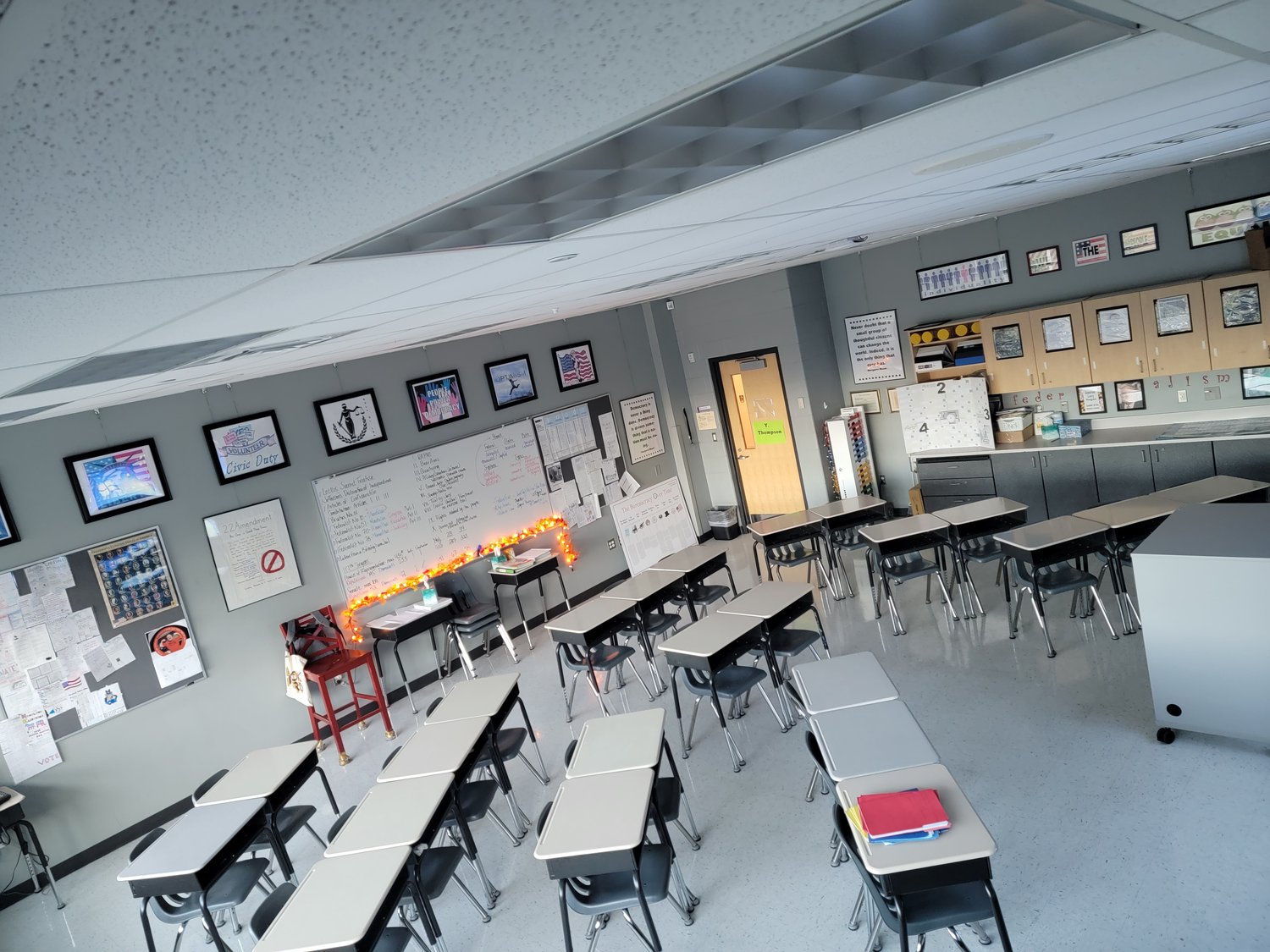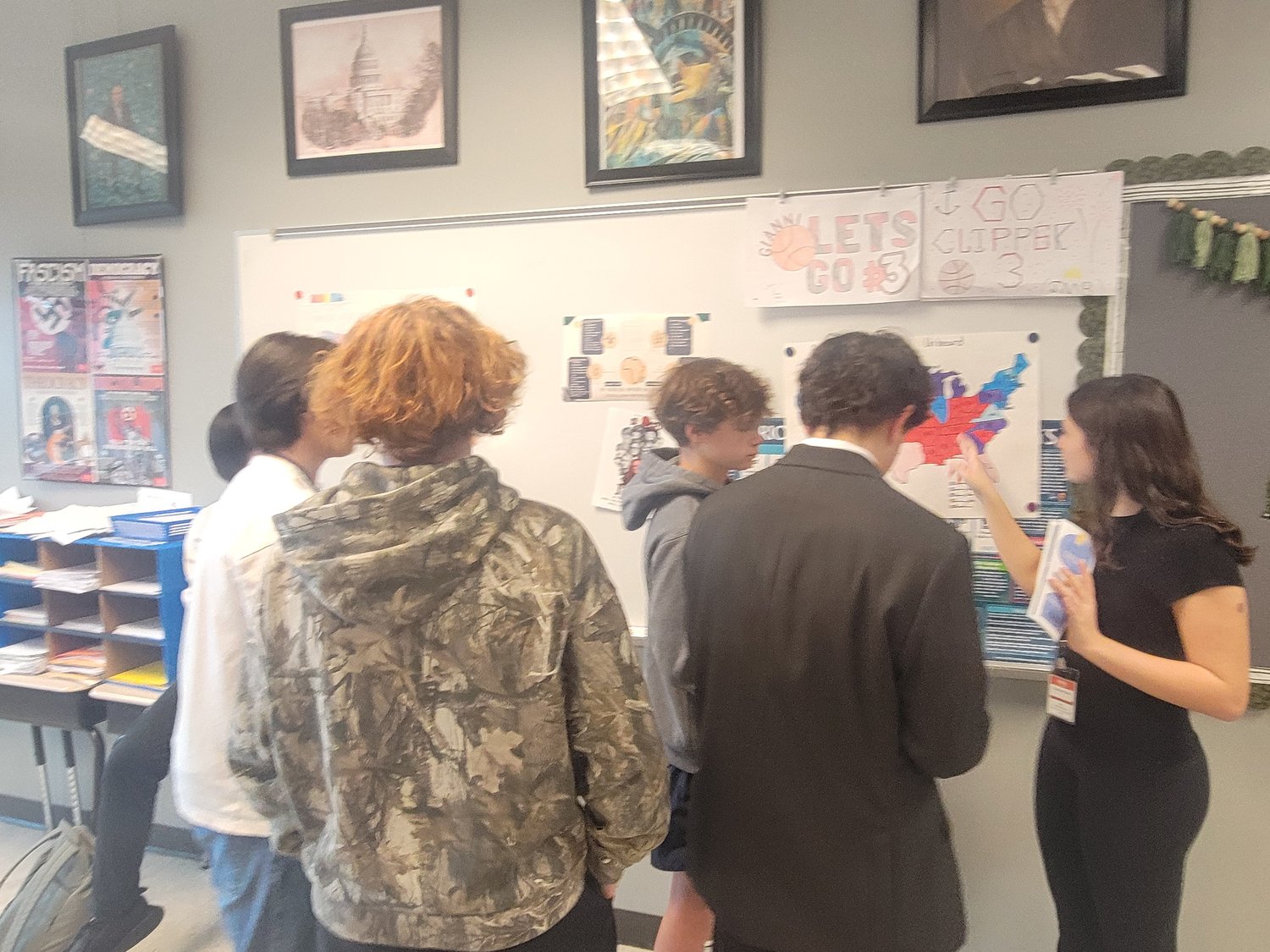
Students during the Elections Project- Political Party member, pamphlet in hand, explaining the elections map her team created and how the party needed to win crucial swing states.
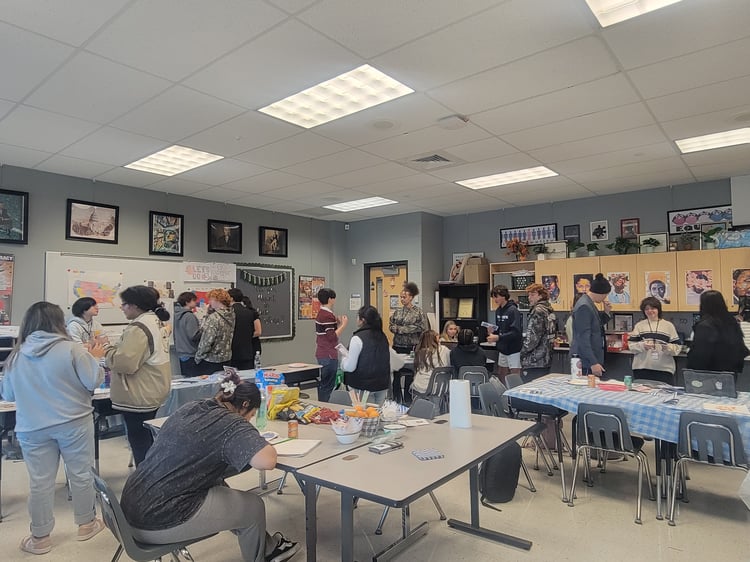
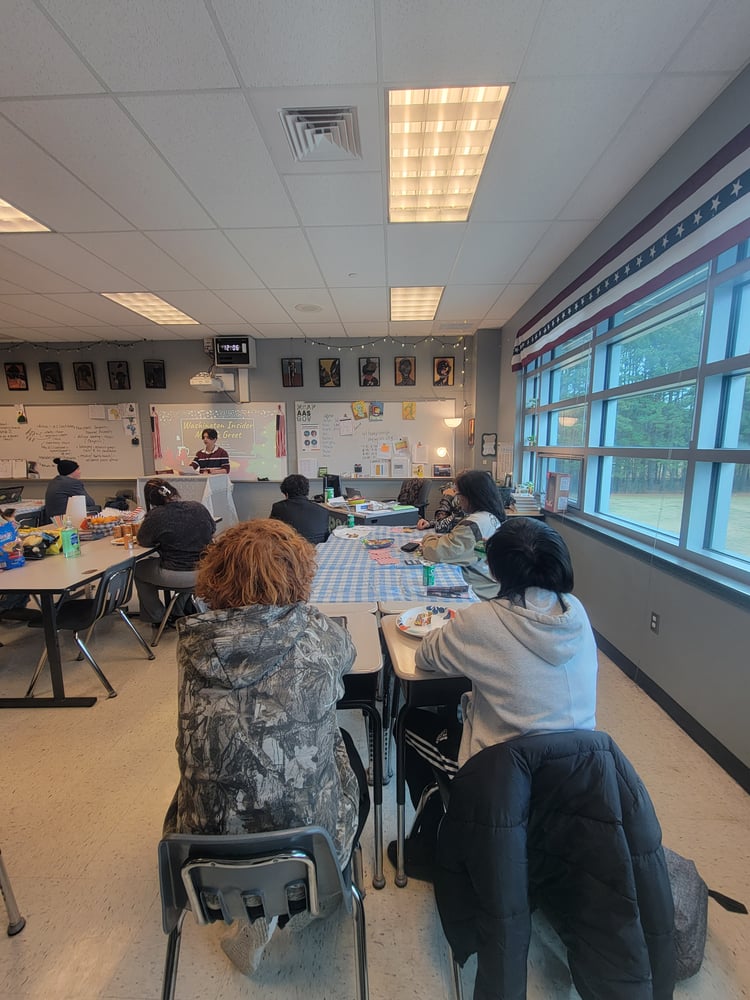

Students mingling at the Elections Project Opener- A Washington Insiders Meet + Greet!
The Why: My Leap Into PBL
Year two of teaching AP U.S. Government and Politics nearly broke me.
I’d inherited the course last-minute after another teacher transferred, and my first year was a whirlwind of frantic lectures, crammed content, and the sinking feeling that my students were memorizing—not mastering—democracy. Unit 1’s foundational nuances and Unit 4’s data-heavy ideologies left us all glassy-eyed. By May, I was exhausted, and my students’ engagement (and my sanity) had flatlined.
But here’s the thing: I’m stubborn. I knew there had to be a way to teach AP GoPo that felt alive—where kids left class buzzing about political theory instead of counting minutes to the bell. So, I took a gamble.
In August 2022, I enrolled in Amber Graeber’s AP PBL Summer Institute. The data hooked me: A study of the Knowledge in Action curriculum showed PBL wasn’t just “fun”—it worked. Teachers in under-resourced schools saw exam scores rise, and students gained skills far beyond the test: critical thinking, collaboration, and the ability to apply knowledge. I was sold.
The How: Projects Over PowerPoints
I overhauled my syllabus into four core projects:
1. Founders’ Intent
Role-playing Madison or Hamilton? Yes, please. Students wrote constituent letters from a Founder’s perspective, then debated their views in a Socratic seminar. (Bonus: I scaffolded the Argumentative FRQ into their drafts—skills on skills!)
2. Bill Drafting & Defense
C-SPAN meets Shark Tank. Teams researched, wrote, and pitched bills. Only the strongest survived committee hearings, but everyone grilled each other in Q&A sessions in the final assessment. (Extra credit for bipartisan persuasion!)
3. Moot Court Mashup
Hybrid PBL for the win. We blended short lectures with real-world case simulations (Dobbs v. Jackson one year, Trump v. U.S. the next). Street Law’s free and differentiated resources kept it fresh.
4.The PBL Ripple Effect: From Elections to Emancipation
This year, I recycled the Elections project’s framework for AP African American Studies Unit 2- Topic 2.24 (Freedom Days: Commemorating the Ongoing Struggle), tasking students with designing our school’s Freedom Days observance. Just like in Elections, teams pitched proposals to a panel (shout-out to our deans and Black Excellence Club!), but this time, their research centered on ideas and themes they found appealing. The winning group’s timeline exhibit and spoken-word performance became the anchor of our assembly, proving PBL’s magic isn’t course-specific. (Fun fact: This project’s success helped sway our school board’s unanimous vote to adopt AP AAS district-wide next year!)

My AP African American Studies students during presentations.
The Results: More Than Just Scores
“But does this hurt their AP exam performance?” A parent asked me recently.
The short answer: Nope. My pass rates inched up yearly, with 1–3 more 5s each exam cycle. But the real wins were intangible:
-Collaboration: Students learned to negotiate like legislators (read: lots of passionate sidebar debates).
-Accountability: No consensus to markup a bill in committee? Your bill dies. (They hated this—and loved it.)
-Gray Areas: No hand-holding. “Does the PAFACA Act, as applied to TikTok, violate the First Amendment?” became a them problem.
-Authenticity: Their BHM assembly proposals went to real administrators—no hypotheticals here.
7 Reasons to Try PBL in Your AP Classroom
1. Collaboration → Example: Bill drafting forced consensus-building across ideologies.
2. Communication → Moot court oral arguments honed their “elevator pitch” persuasion.
3. Assessment Differentiation → Projects allowed artistic, verbal, and written demonstrations of learning.
4. Accountability → Team roles meant peer pressure worked for me, not against me.
5. Navigating Gray Areas → “Why does Trump actually dislike TikTok?”
6. Student Choice → Pick your Founder, your bill topic, your campaign political party. Ownership = buy-in.
7. Real-World Application → The BHM assembly wasn’t just a grade—it was a legacy.
Another moment to reflect, knowing PBL was worth it.
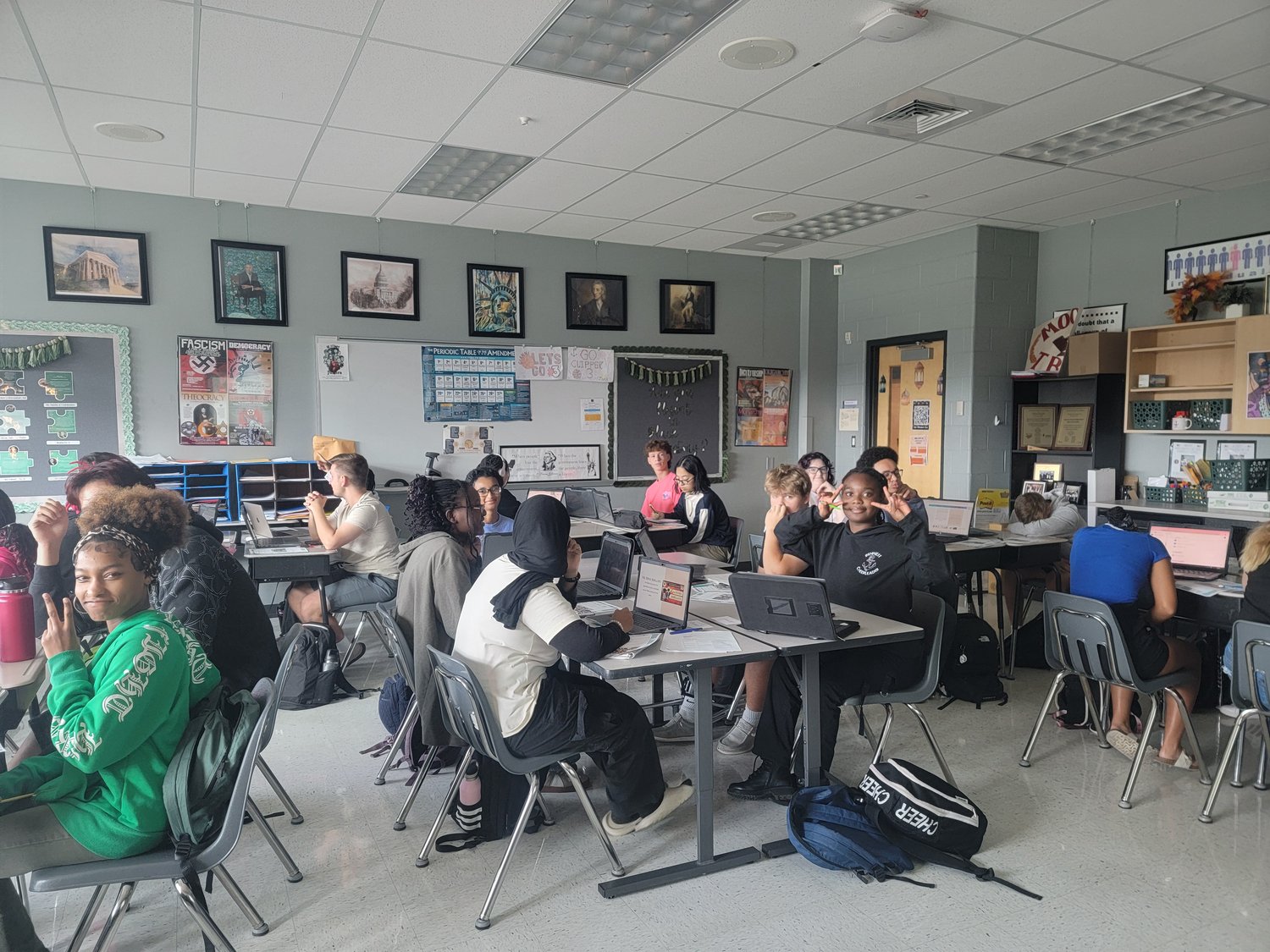
Final Thought
PBL isn’t a magic bullet—it’s messy, loud, and requires lot's of planning and flexibility. But when a kid tells you, “I used my experience in Moot courts to join the school's Mock Trial team,” and you see that student just blossom or "I like how our presentations were used to actually plan and use for our school's function" you’ll know: This is why we teach.
Want to try it? My AP African American Studies BHM Project Packet is on the site under Unit II. Or drop a comment below—I’d love to hear your PBL experiments!


